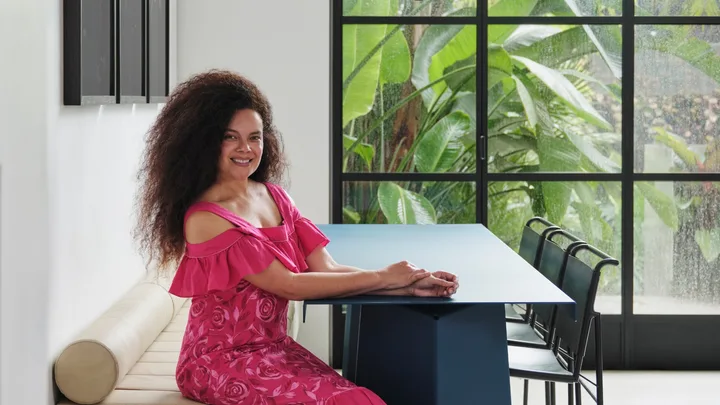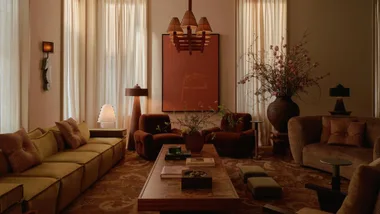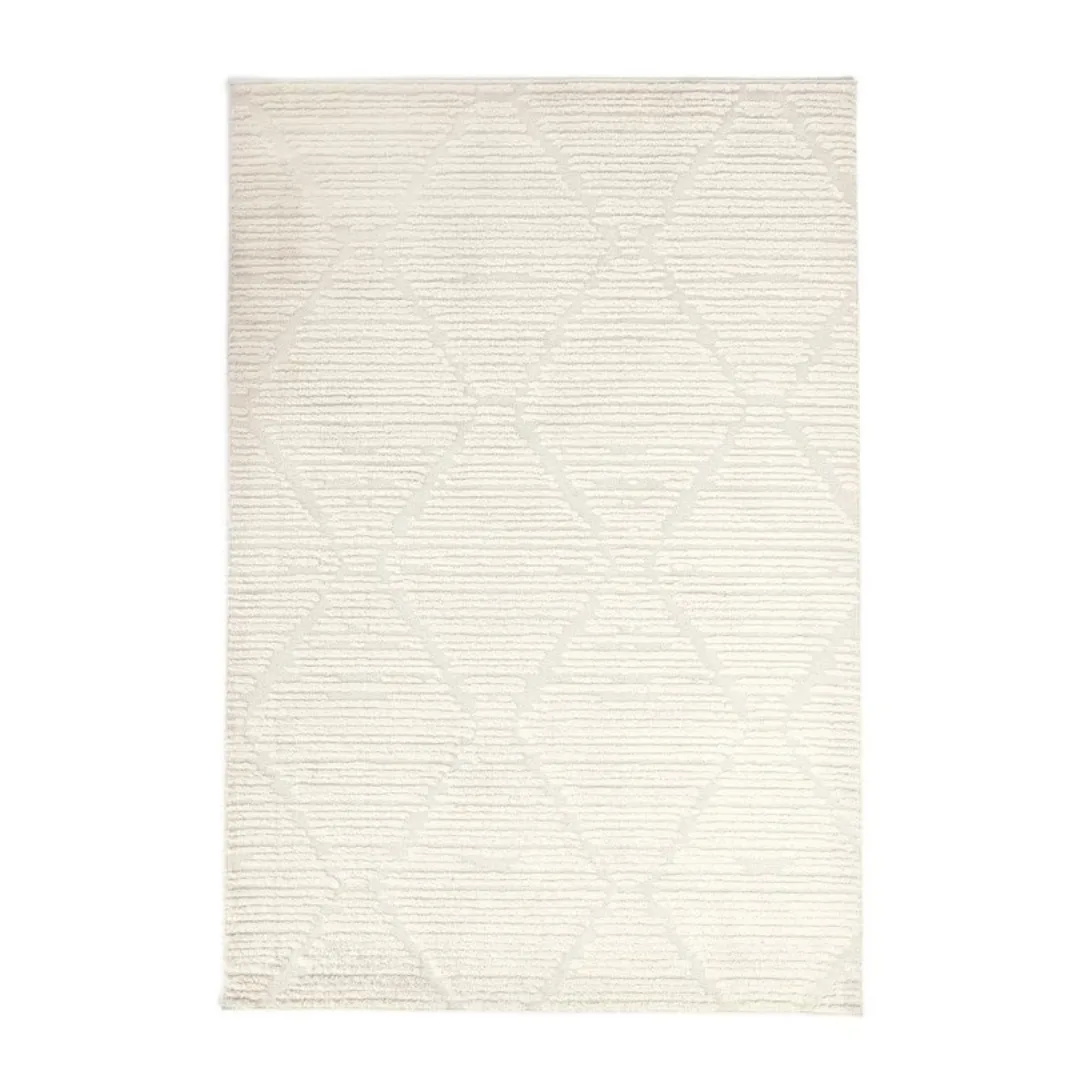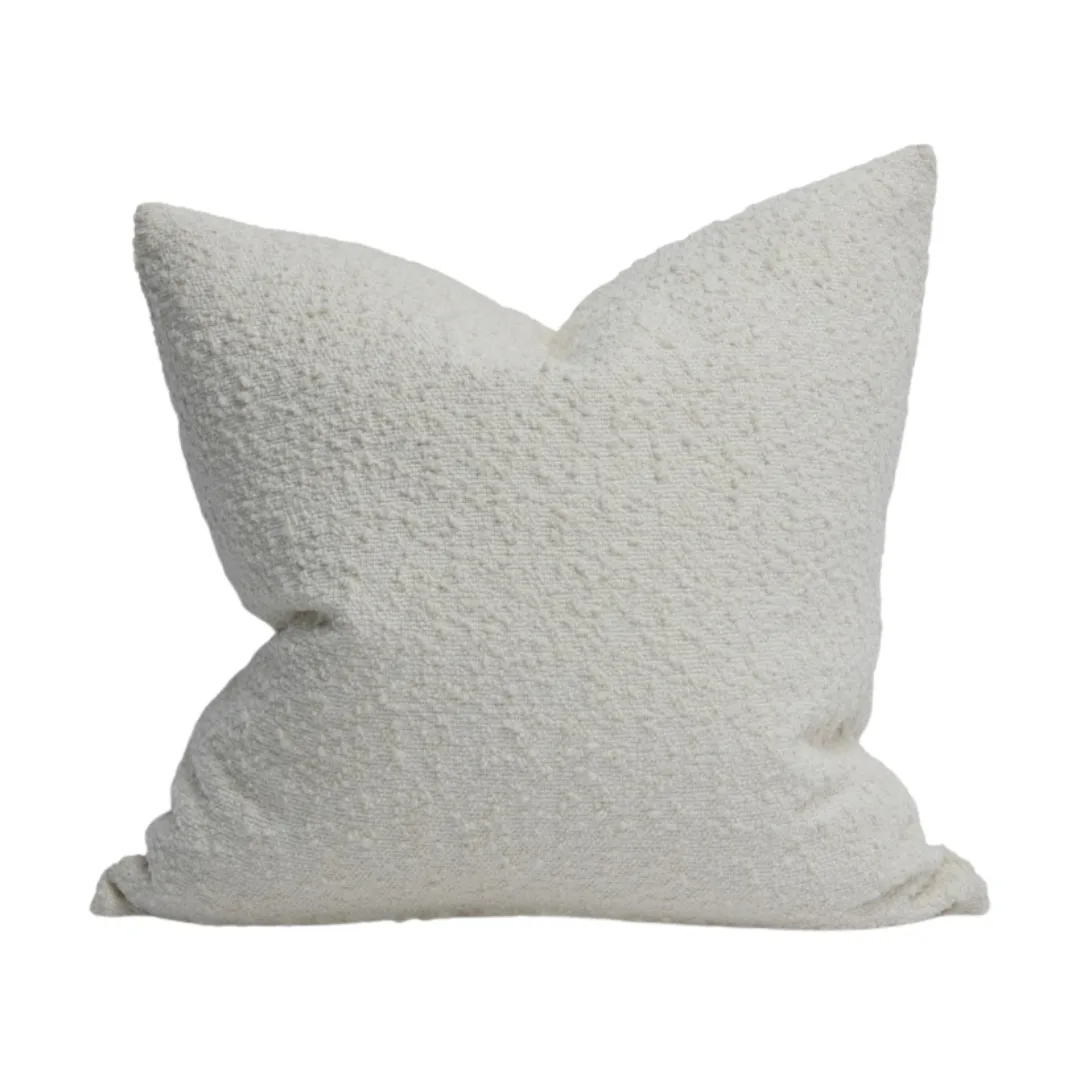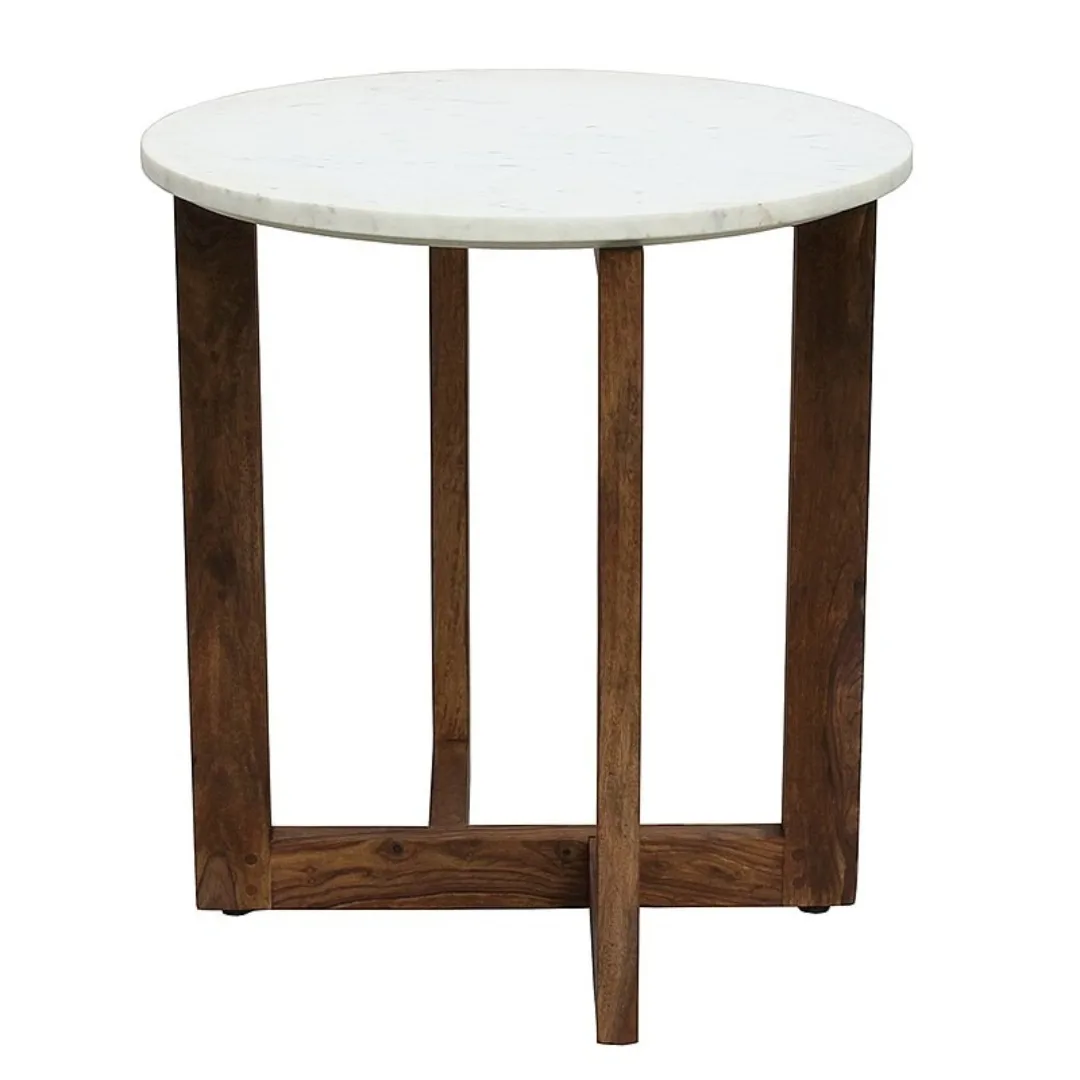When artist Angela Tiatia approached architect Bianca Pohio to design the renovation of her Paddington terrace, she asked for a pink house and a red kitchen. “I’m Samoan, and my sense of home is tied to my culture. My grandmother’s home in Samoa was bright green and yellow, and my mum lined the edges of our living room ceiling with plastic red roses in our home in Aotearoa. It’s a very eccentric and colourful culture,” explains Tiatia. “But Bianca gently said, ‘No,’ and took over the whole thing!”

In approaching the design, Pohio was cognisant of Tiatia’s art collection. “They understood what I actually needed wasn’t a red kitchen, but lots of white walls to honour the artworks that I’ve assembled over a lifetime.” Pohio encouraged Tiatia to also hang her own art in the home. “I resisted this at first as it felt conceited to show my own work. But Bianca really pushed me to be proud of displaying my work in my home. I’m so glad we did. It ties together the story of my life, my artmaking and the spaces in my home.” Tiatia, who grew up between New Zealand, Samoa and Australia, has a strong interest in representations of Pacific identity, which began when she was 22. “I remember finding a Polynesian Barbie. The box included a one-dimensional description of the doll’s life and the Pacific culture she apparently hailed from.
This odd caricature of an Island woman left me feeling puzzled. Turning to online marketplaces, I began to acquire objects that perpetuated Pacific stereotypes from around the world, including a rare ceramic ashtray made in the shape of a ‘hula girl’ with the words ‘Turn me over’ written across her. When you turn it over, it shows her completely nude.” It became clear to Tiatia, now 51, that these objects and images of Pacific people were being made by those who had no connection to the Pacific and were sold to people with no connection to the Pacific.
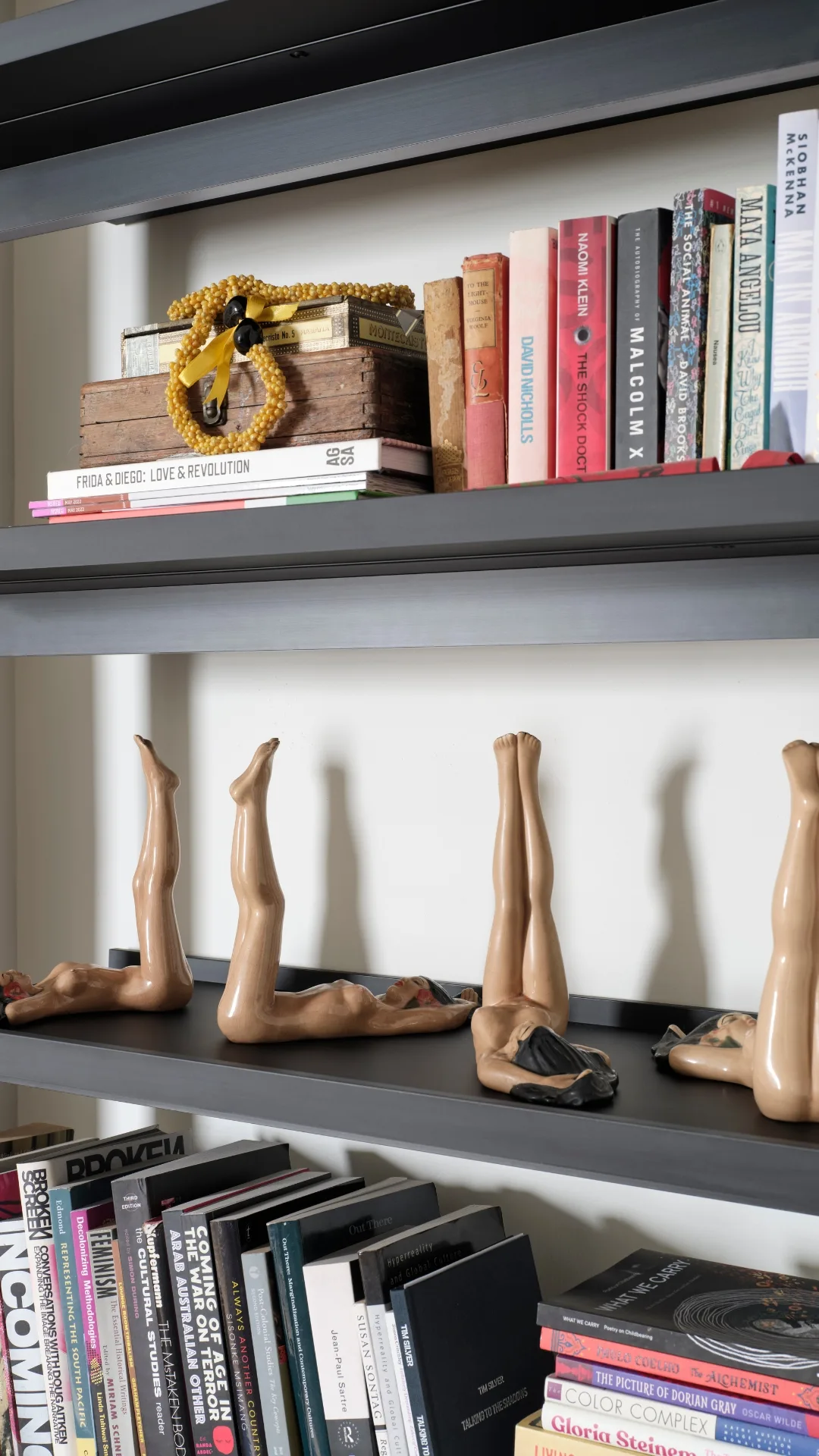
It was a market feeding into a self-perpetuating loop of the fetishisation of Pacific culture. She uncovered search tags created and used by eBay collectors that spoke directly to the demeaning nature of how they imagined the Pacific. “People use search terms like ‘bare-breasted savage woman’, ‘sexy hula girl’, ‘nude Polynesian maiden’ and every other derogatory name you can imagine.
I was both repelled and fascinated by this nomenclature and decided to research this to inform my practice. So I used these phrases to search for items to buy on the internet – to eventually rematriate them.” This formed the basis of Tiatia’s Foreign Objects (2012) artwork, which has been exhibited in Germany, Denmark and New Zealand. Foreign Objects displayed these objects in grandiose vitrines and cabinets, conferring a preciousness to the objects inconsistent with their kitsch and racist reductions of Pacific culture and identity. Displayed en masse, the non-Pacific narrative of the passive, sexually available female and the male aggressor is palpable.
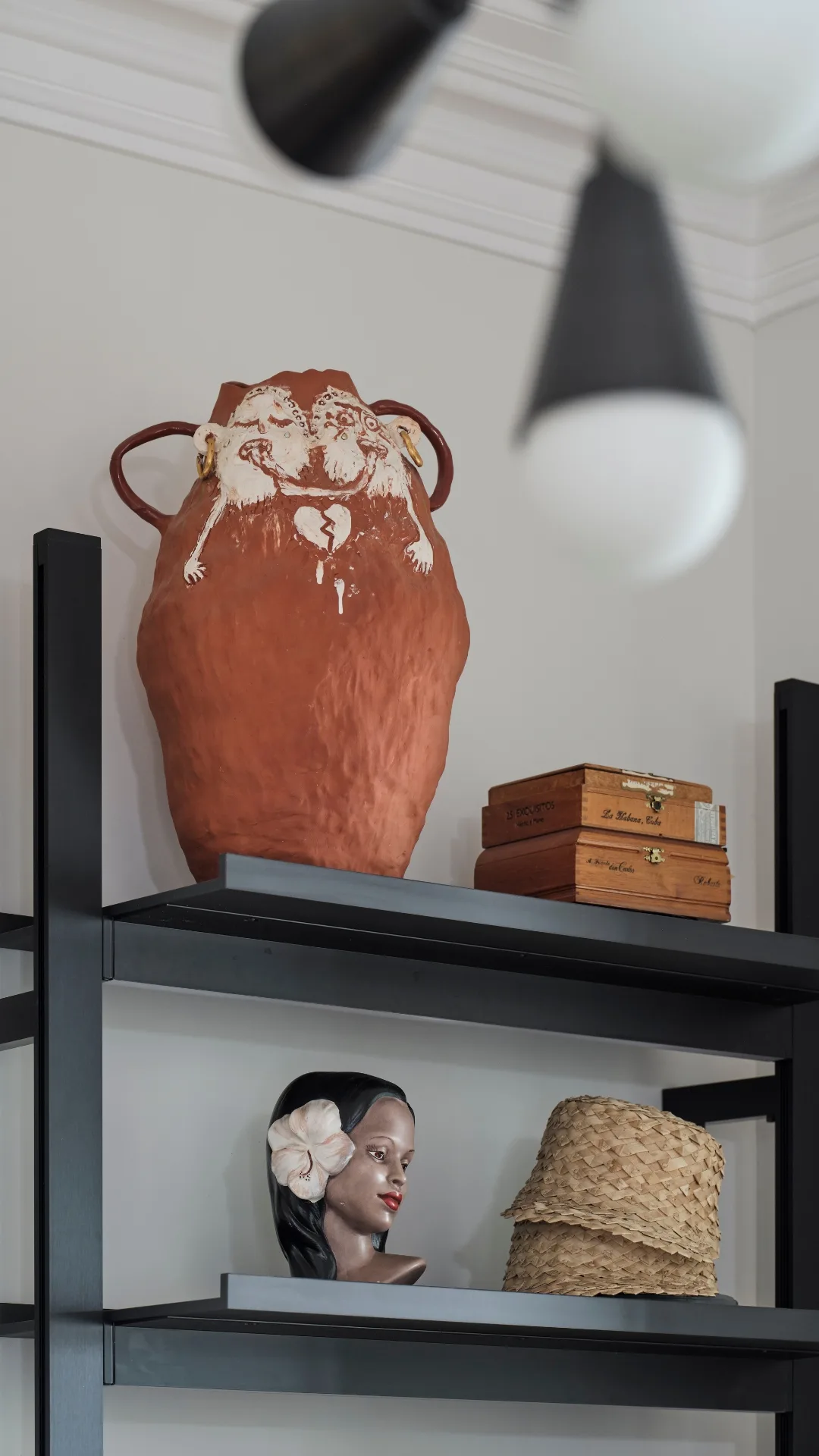
Several of these objects can be seen around her home: Marwal busts, ceramic nude female figurines, Pacific Island postcards and Hollywood film posters. “It reminds me how far we’ve come in terms of representation, and in rejecting how we are seen through the eyes of non-Pacific Islanders. We resist these one-dimensional narratives.” This theme of resistance and full, nuanced representations of Pacific culture underpins many artworks Tiatia and her husband, Kieren Cooney, own. Artists like Rakai Karaitiana, who introduced Tiatia to her husband more than 30 years ago, and photographer Mark Smith, who is also a long-time friend.
Others honour her deeply personal connections to her fellow artists. “We admire and love them very deeply. We love their commitment to their work, their eyes, their politics – these are artists who have so much integrity and heart.
My mentor Jim Vivieaere used to say, ‘If I like the artist, I like their work,’ and this is true for Kieren and me.” Supporting Indigenous and people of colour artists is non-negotiable for the couple. “When artworks made by brown and black artists are displayed en masse, you can see a powerful narrative of a united stand in self-representation and community empowerment.” This includes Kaylene Whiskey’s Sulman Prize-winning Kaylene TV, which Tiatia chose when she judged the prize in 2018, and Vincent Namatjira’s study for a portrait of Tony Albert; the finished painting was shortlisted for the Archibald Prize in 2019.
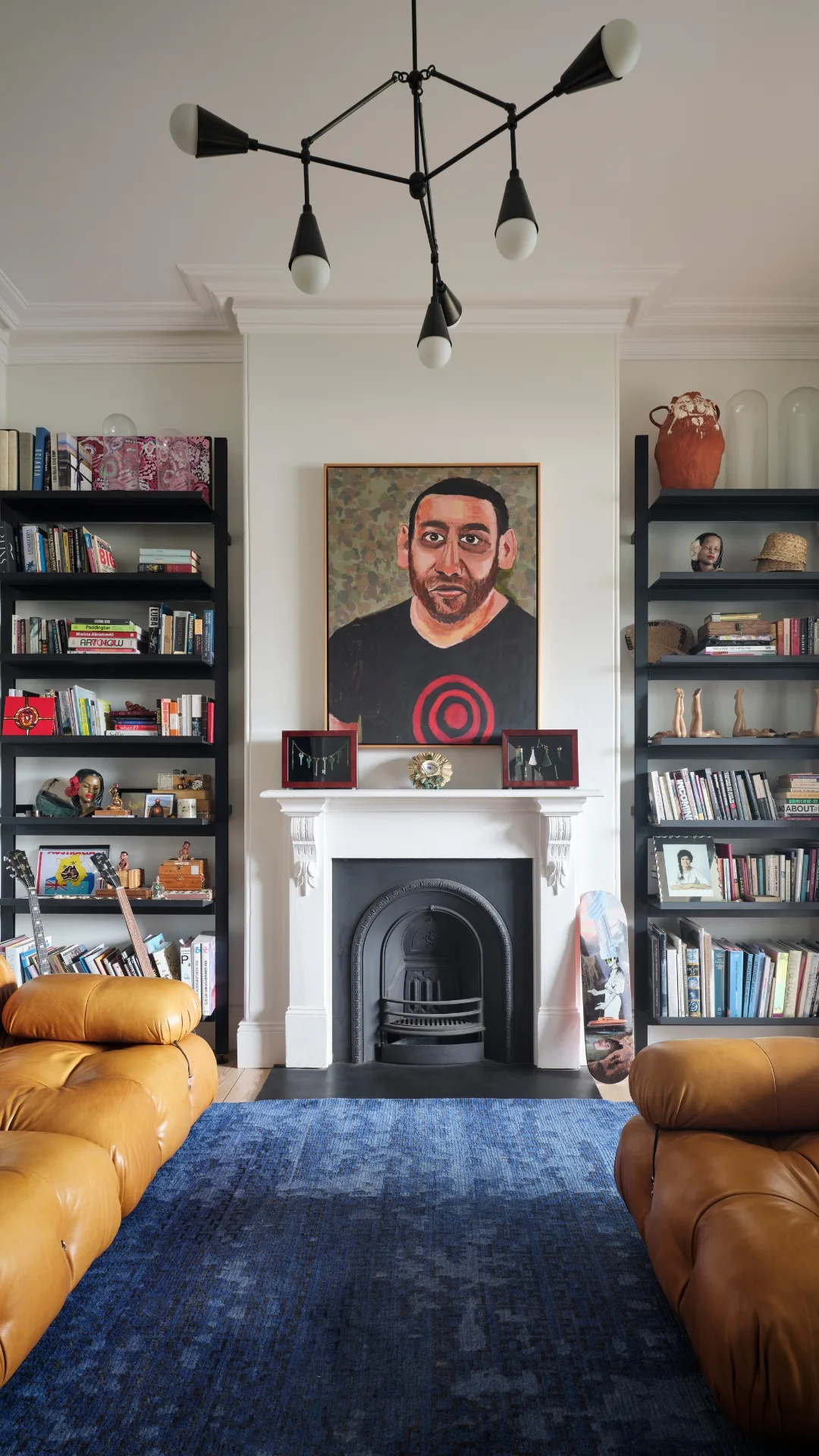
At Tiatia’s 1890s terrace house, much of Pohio’s renovation focused on creating a dramatic kitchen/dining area at the north-facing rear, which is now an open-plan cooking and entertaining hub, where glazed doors open to a sun-filled terrace and garden. The art collection is roughly divided between the minimalist downstairs living room and the more energetic salon hang of the upper level. “In the past, everything was hung every-where, even above the toilet,” says the artist. “With Bianca’s guiding hand, we wanted to be more thoughtful about the relationships between the artworks.
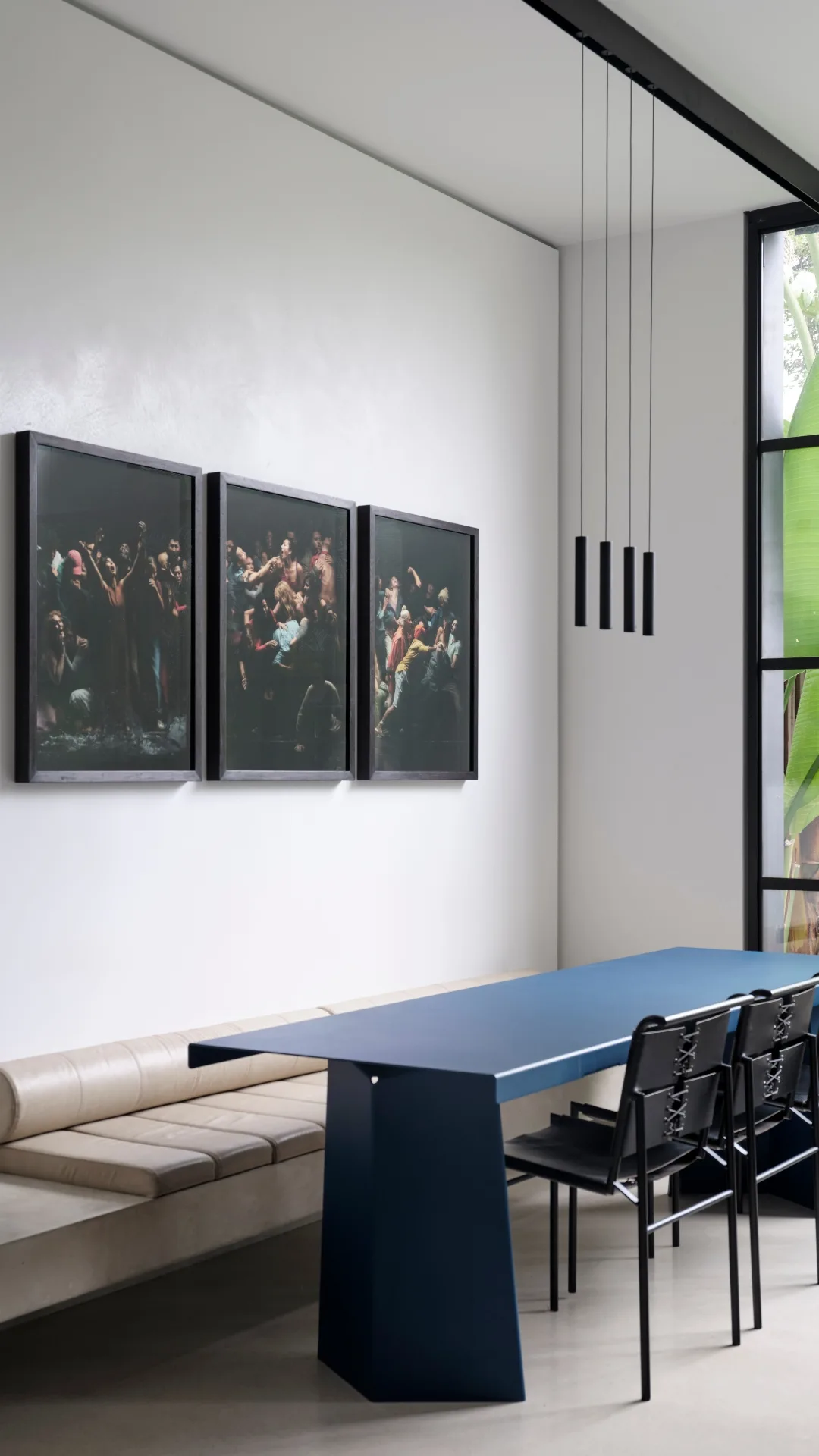
Although I’m a maximalist at heart – someone who wants a red kitchen – we thankfully now have a sanctuary. It’s very minimal and clean. If we didn’t force restraint in our home, we would probably be hanging works on top of other works. Thank goodness for Bianca.
This is an edited extract from Collecting: Living with Art by Kym Elphinstone (Thames & Hudson, $79.99). Out now.
